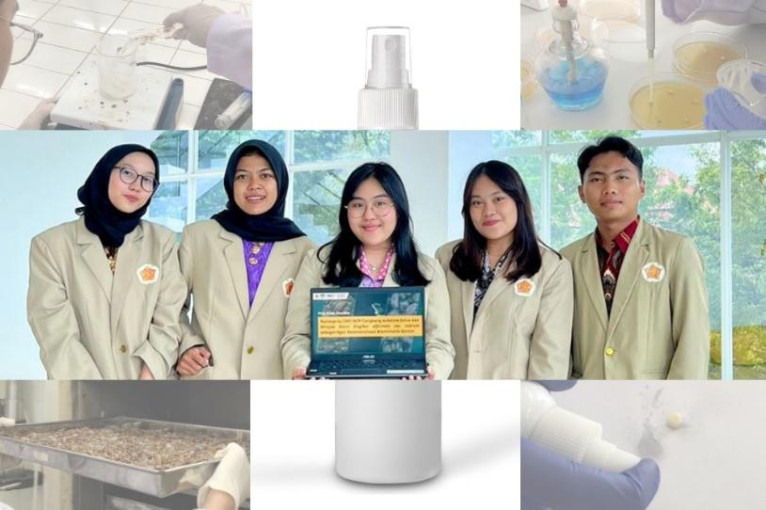
Tooth demineralization, the loss of essential minerals such as calcium and phosphate, is a common condition affecting many people. When teeth lose these minerals, dentin tubules become exposed, leading to sensitivity and discomfort.
Traditional remineralization therapies often use ACP (amorphous calcium phosphate) paste, which can cause allergic reactions in individuals with lactose intolerance.
To address this issue, a team of students from Universitas Gadjah Mada (UGM) has successfully developed a nanospray that combines snail shells (Achatina fulica) and red ginger (Zingiber officinale var. rubrum) as agents for tooth remineralization and antibacterial protection against the bacteria responsible for tooth demineralization.
This team, part of the Student Creativity Program in Exact Science Research (PKM-RE), includes Natalia Gabriella Suryawibowo, Tiara Ayu Fitrah Haidam, Hesya Nurulum Yunitasari, Moh. Burhannudin (all from the Faculty of Dentistry), and Deta Stephanie Purba (Faculty of Pharmacy), with guidance from Dr. Archadian Nuryanti, a lecturer in the Biomedical Department at UGM’s Faculty of Dentistry (FKG UGM).
The students innovatively utilized snail shells, which are rich in calcium, to create ACP. This was then combined with CMC (carboxymethyl chitosan) to serve as a binding agent in restoring calcium and phosphate ions to the teeth.
“This discovery was further enhanced with the addition of ginger. Its essential oil acts as a freshener and helps prevent the growth of bacteria that cause demineralization. The combination of these two ingredients is effective for tooth remineralization,” explained Natalia Suryawibowo, the team leader, on Wednesday, Aug. 14.
She elaborated that remineralization replaces calcium and phosphate minerals that have begun to erode from the teeth. Remineralization is crucial to prevent tooth decay and maintain strong teeth against bacteria, acids, and sugars in food.
The creation of the nanospray begins with the preparation of snail shells, which are processed into ACP and combined with CMC to produce CMC/ACP powder. Red ginger is then separated to extract its essential oil.
“The two are combined to create the nanospray formula,” she explained.
According to Suryawibowo, preliminary research results show that after spraying on the teeth, SEM (scanning electron microscope) images revealed that the nanospray effectively seals the diameter of the dentin tubules. Its small particle size and wide distribution allow it to penetrate the dentin tubules.
“The combination of snail shells and red ginger is effective for tooth remineralization and combating bacteria,” added Hesya Nurulum Yunitasari.
Tiara Ayu Fitrah Haidam emphasized that their innovation is a novel research approach. It involves the antibacterial properties of red ginger in the oral cavity and using calcium from snail shells as the base material for ACP production.
The team hopes this research will further support the development of snail shells and red ginger as a safe product for tooth remineralization therapy.
“We hope this research can be continued until it becomes a marketable product that both the public and medical practitioners can use,” she said.
Author: Bolivia
Editor: Gusti Grehenson

